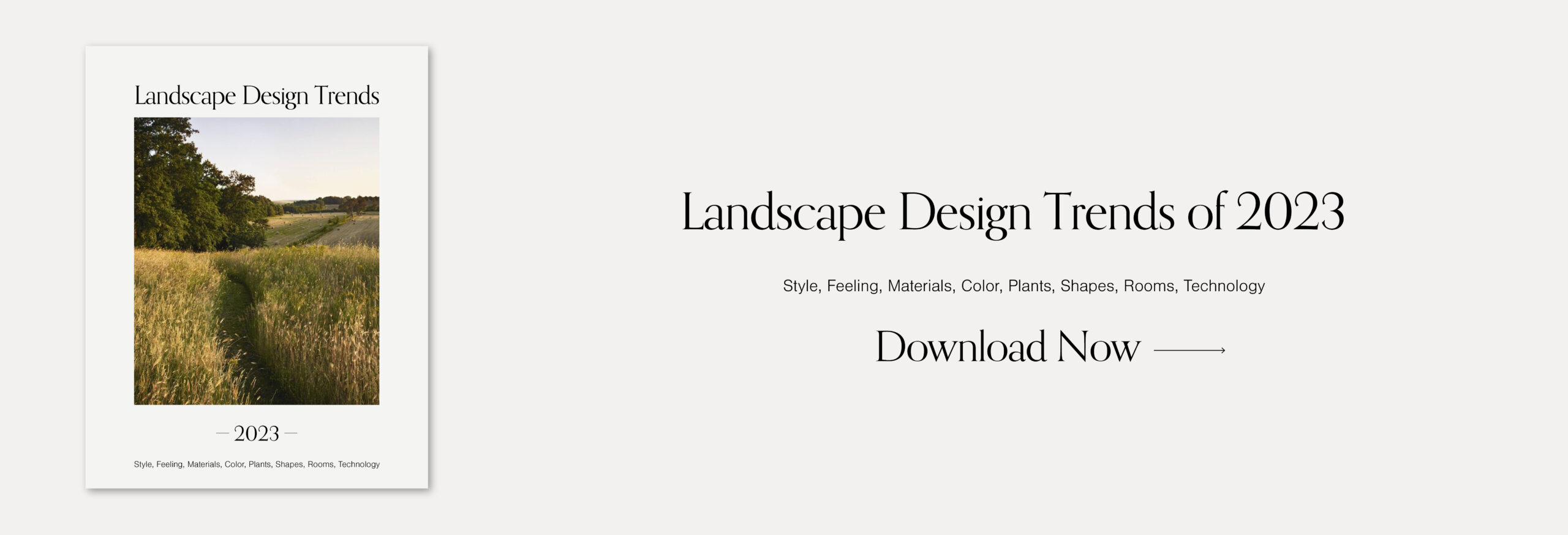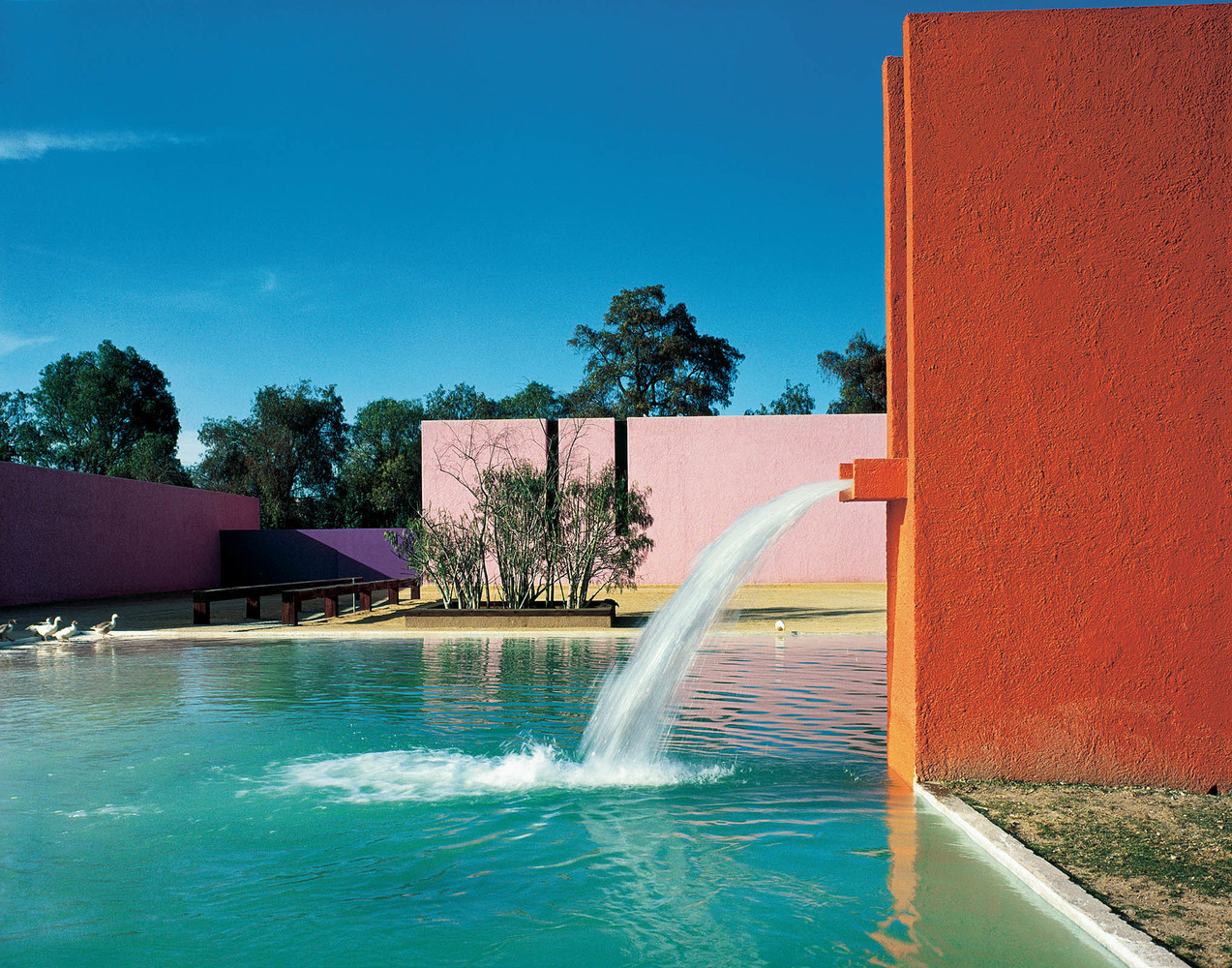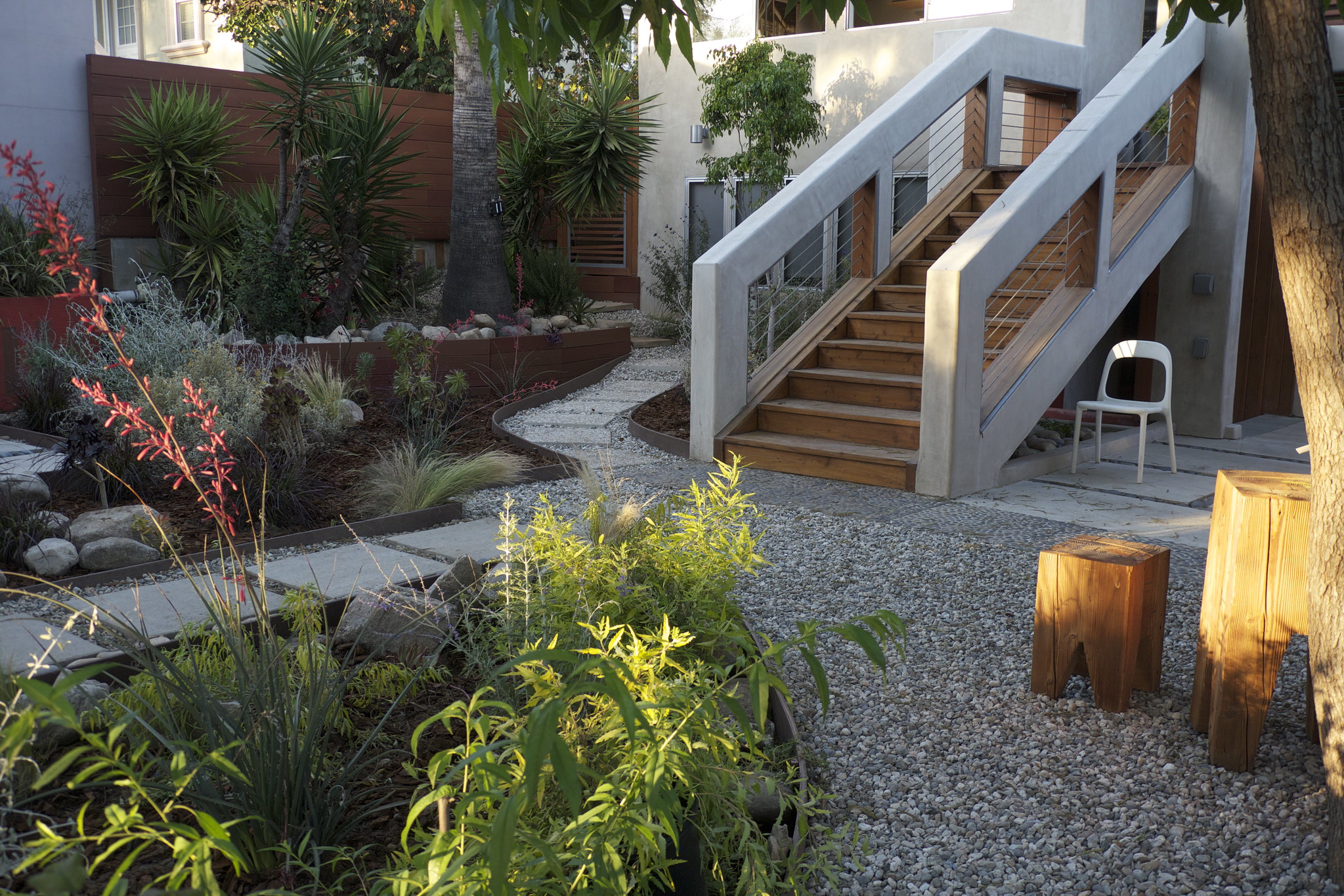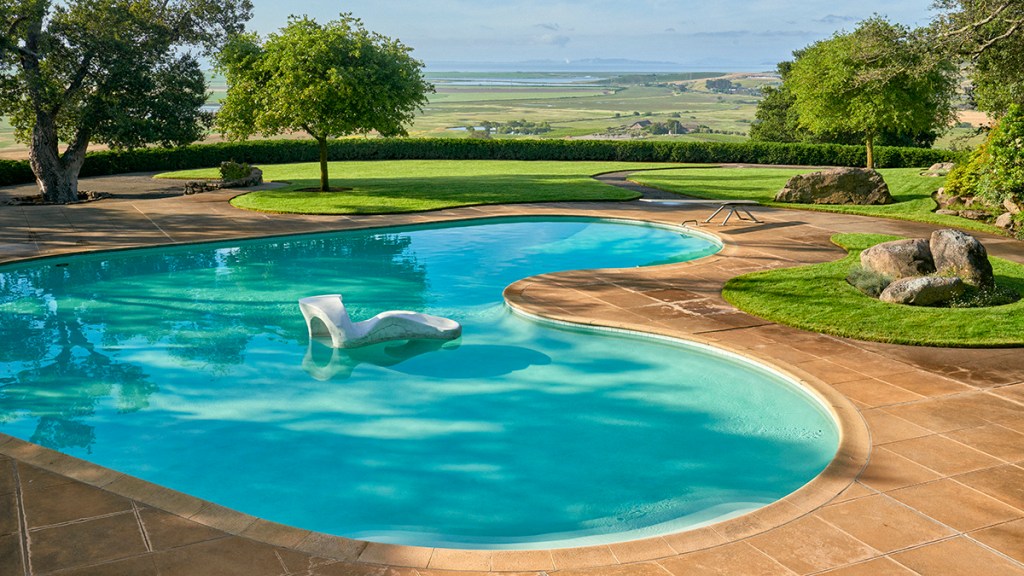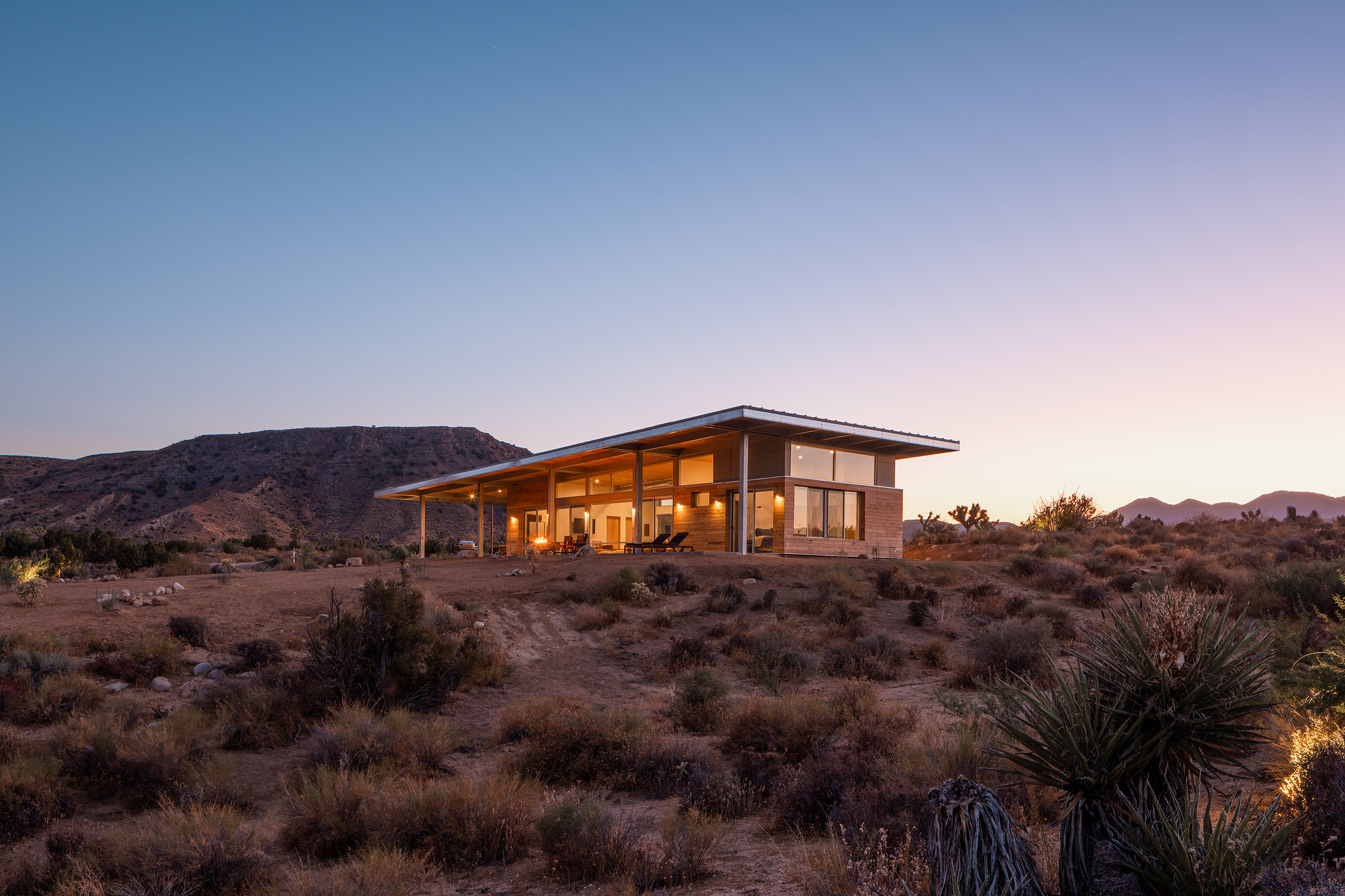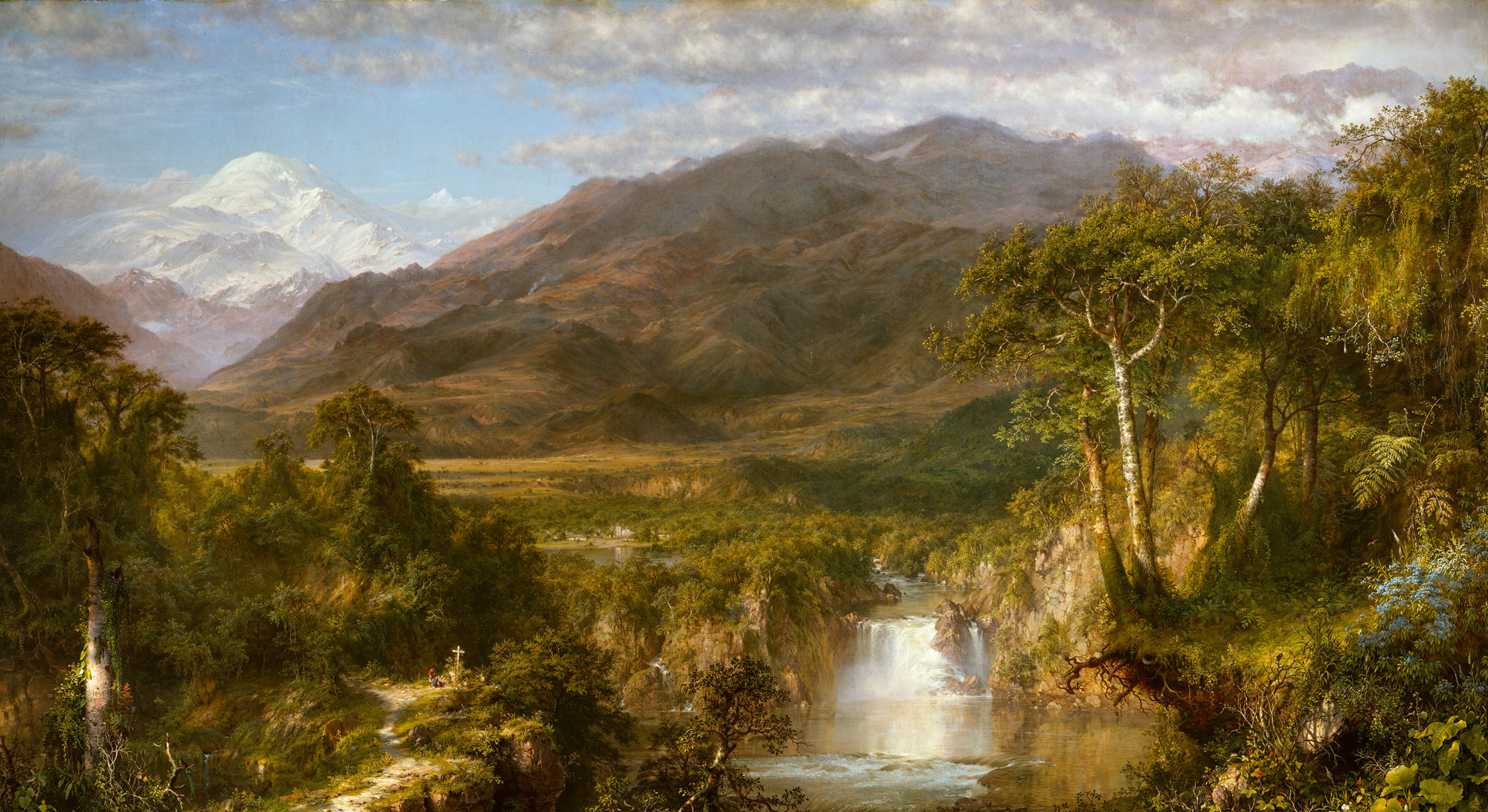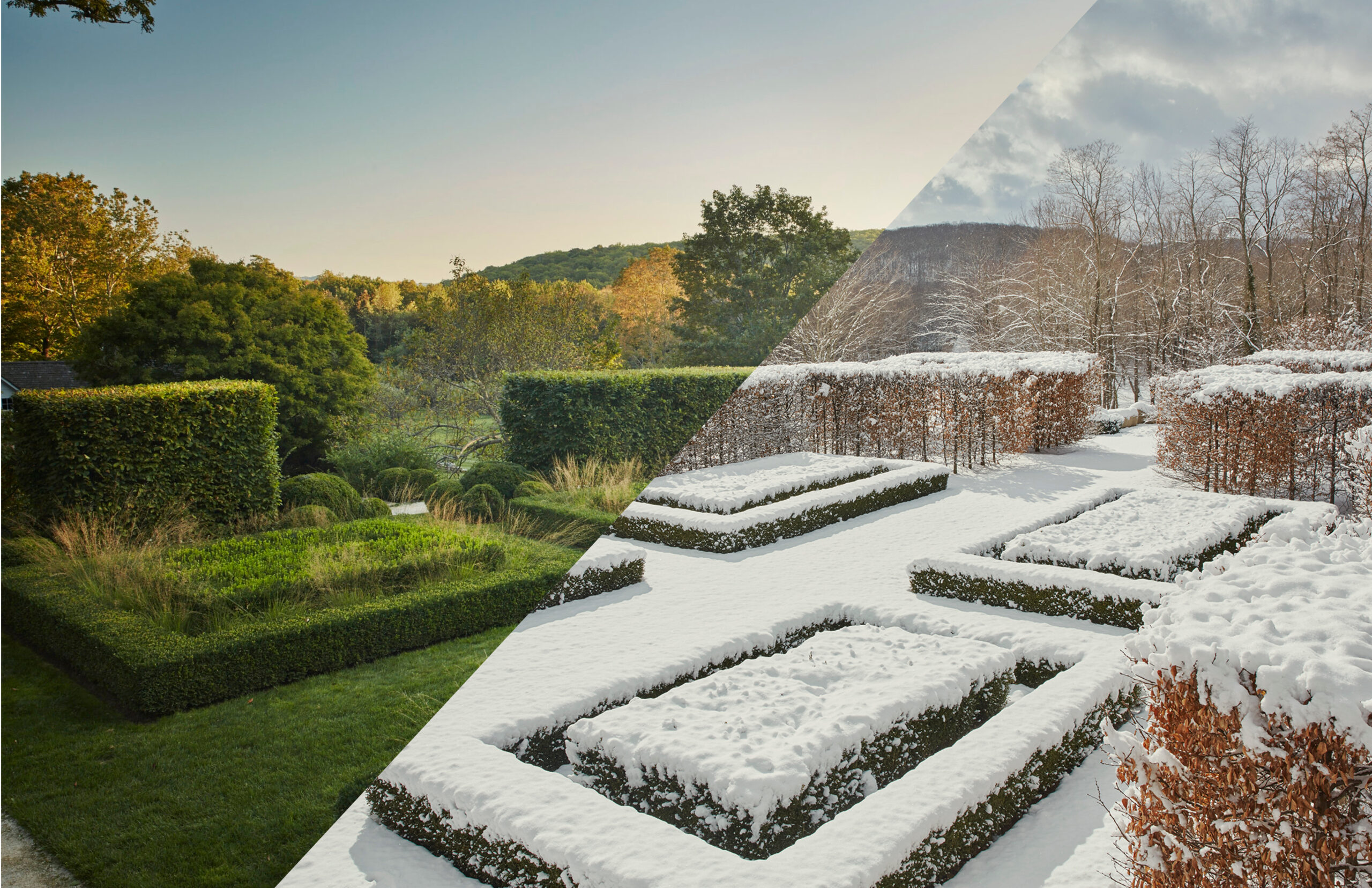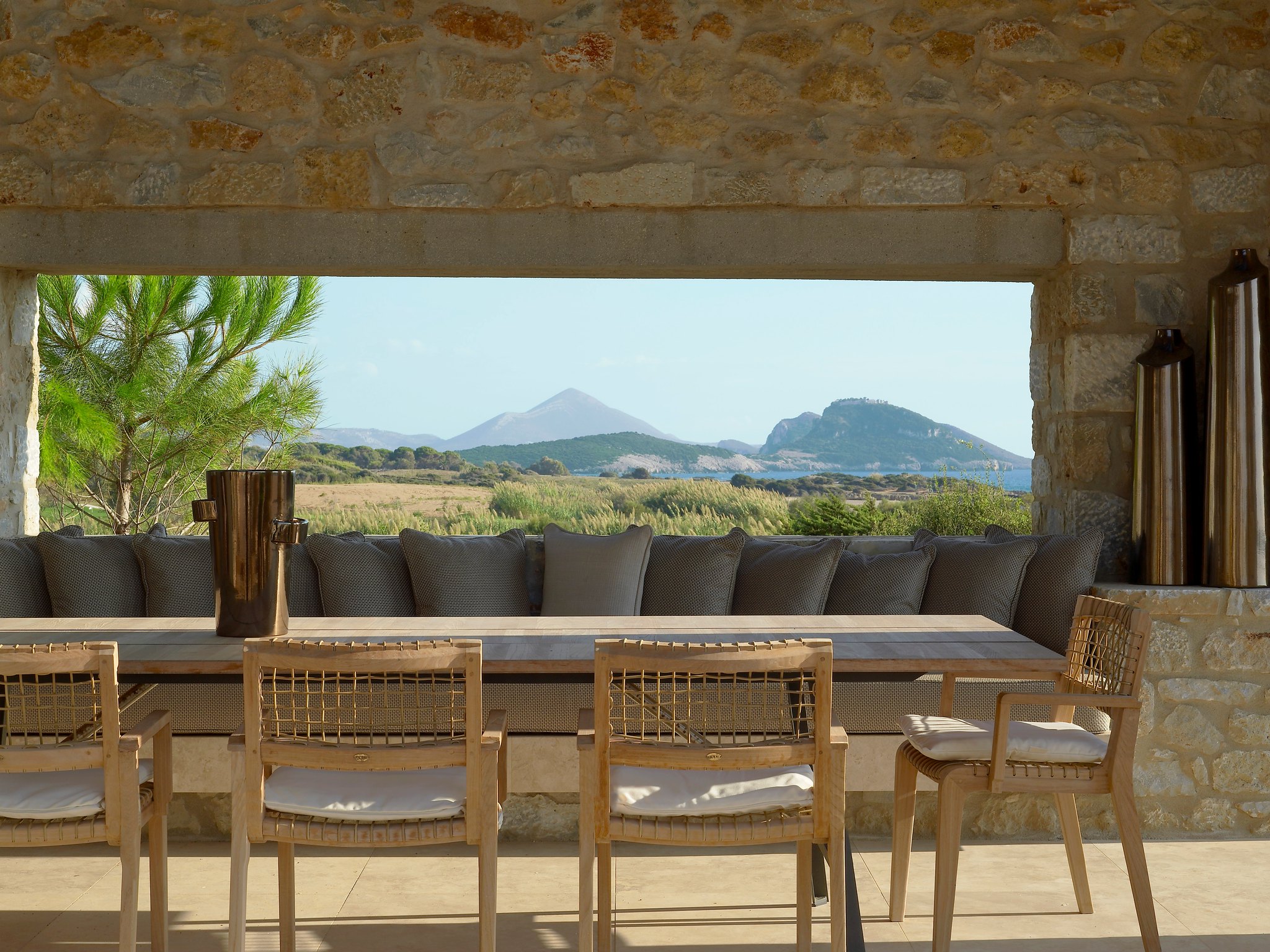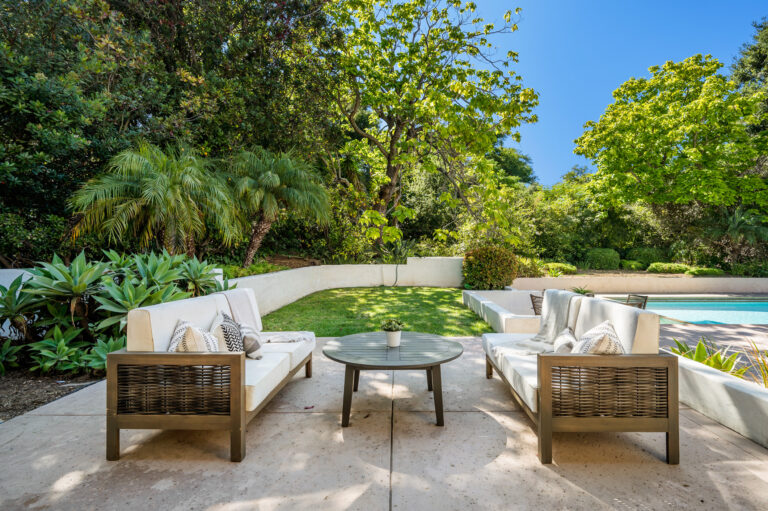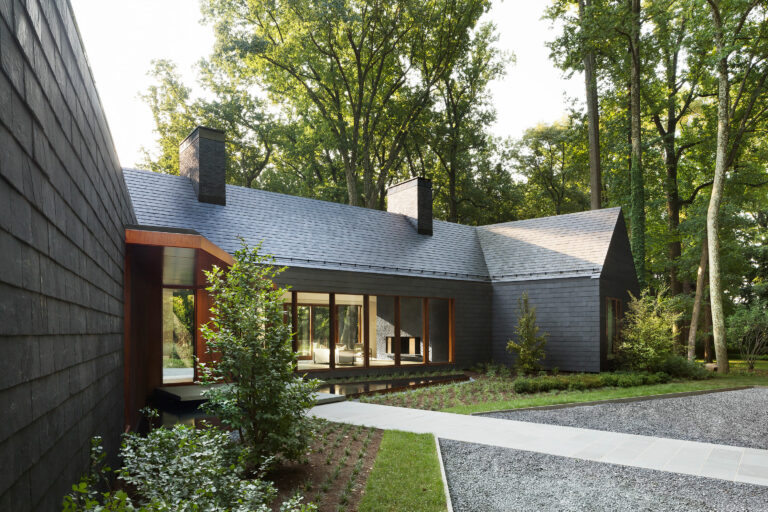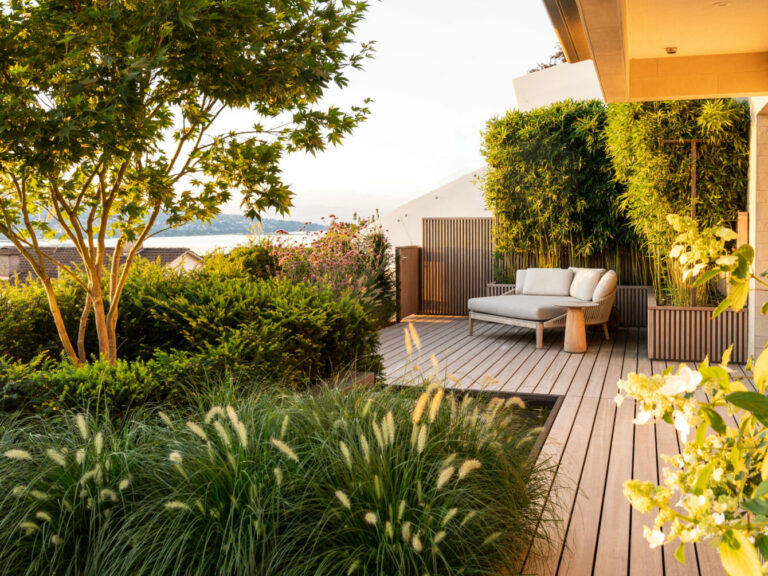For centuries, landscape architects and designers carefully analyze and study how the sun, soil and water affect the behavior of plants on each project site and specify plants that are native and local to the environment.
Through comparative analysis between the project site and the requirements needed for each plant, this process ensures that each plant meets the demand needed by the plant to grow based on adequate amount of sunlight, soil nutrients and water needs to create a thriving landscape.
With 200 new plant species discovered each year, landscape design professionals are continuously searching for new plants to use on projects to benefit not only the project but also the clients’ needs.
While every project has a different microclimate, it’s important to understand the characteristics and requirements of each plant to ultimately create a thriving garden. “Every plant has its fitness and must be placed in its proper surroundings so as to bring out its full beauty. Therein lies the art of landscaping.” – Jens Jensen
A healthy and thriving landscape has many benefits to the interior, as well as the exterior of the home such as the reduction of heating, cooling and maintenance costs (cutting grass, pruning trees, watering and irrigation).
Online platforms have made discovering new plants much easier. In as simple as a few clicks, by simply inputting the location of your project, in result, you can be delivered a directory of plants with plant specifications, noteworthy characteristics and where to find each plant listing for a successfully built landscape.
Why are Native Plants Important for a Yard?
Plantings within a landscape play an important role when it comes to the performance of the site. Many successful landscapes combine performative and aesthetic qualities to create a flourishing landscape that exists year-round.
The surrounding context and the exterior of a landscape directly affects the performance of a home. Landscape affects the interior of a home, how water moves on the site and, in general, how homeowners and visitors feel. A crucial requirement when designing will be to study how the sun and wind can affect each landscape differently because each site will always be unique in their topography.
During the summer months, leaves remain on trees and allow for landscape to create passive shading. For instance, large deciduous trees planted on the south side of a home can shade the interior space from direct sunlight by casting shadows on the building while the sun is at its peak.
This passive shading can also reduce the cooling costs a homeowner may experience during the summer months.
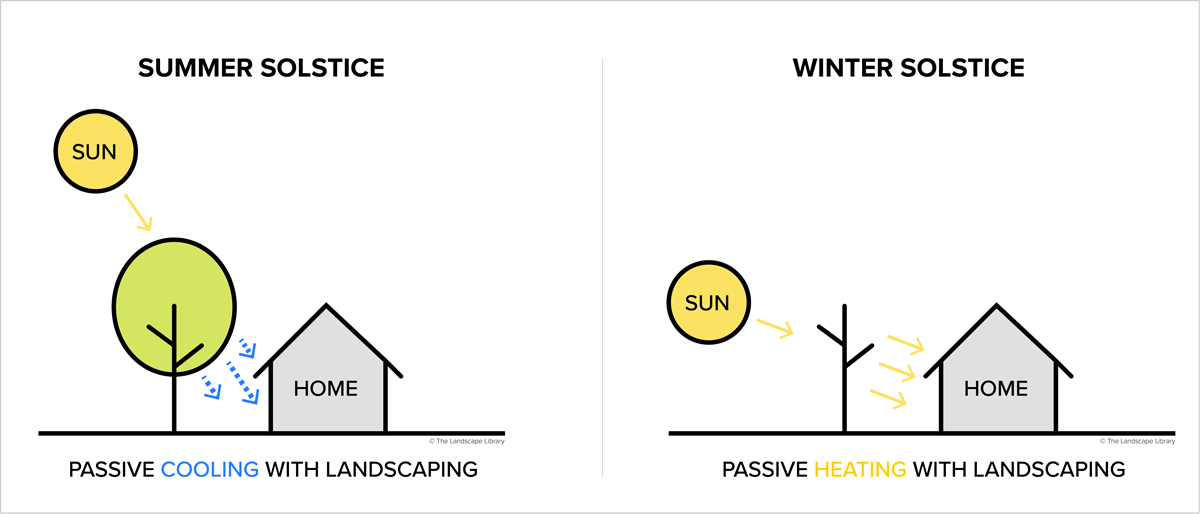
Another benefit of landscaping for your yard is that plantings can reduce noise from passing vehicles on nearby streets while creating privacy to the interior of the home.
Landscape noise control can be achieved in two ways. First, it can be achieved through dense layers of plants. These can be placed close to the source of noise or behind it. They can also be placed to provide visual impact or fall color. Finally, they can complement the design of the overall landscape. To get the best noise control results, use landscaping with a combination of dense plants and soft, shady trees. These methods will ensure that your yard is free of unwanted sound.
Planting trees is a great way to decrease the noise in the landscape. This type of plant has an extremely positive effect on our sense of hearing. It is also known to promote health and performance. It can also be an effective way to block unwanted noise. Flowing water can create a soothing presence within a landscaping project, which can help reduce the impact of noise. While you don’t have to install a large water feature in your yard, you should ensure that it is placed close to the area that is experiencing the sounds.
A high-density hedge or flexible panel fence can help prevent noise. It is also effective in blocking sound. Plants absorb noise. A dense hedge can catch sound waves angled upward. Woodlands are another excellent sound-absorbing land use. Their countless twigs and trunks are excellent for reducing noise. If you’re looking for a natural sound-absorbing landscape, woodlands and forests are among the best options.
See diagram below as an example of laying landscape at the perimeter of the yard.
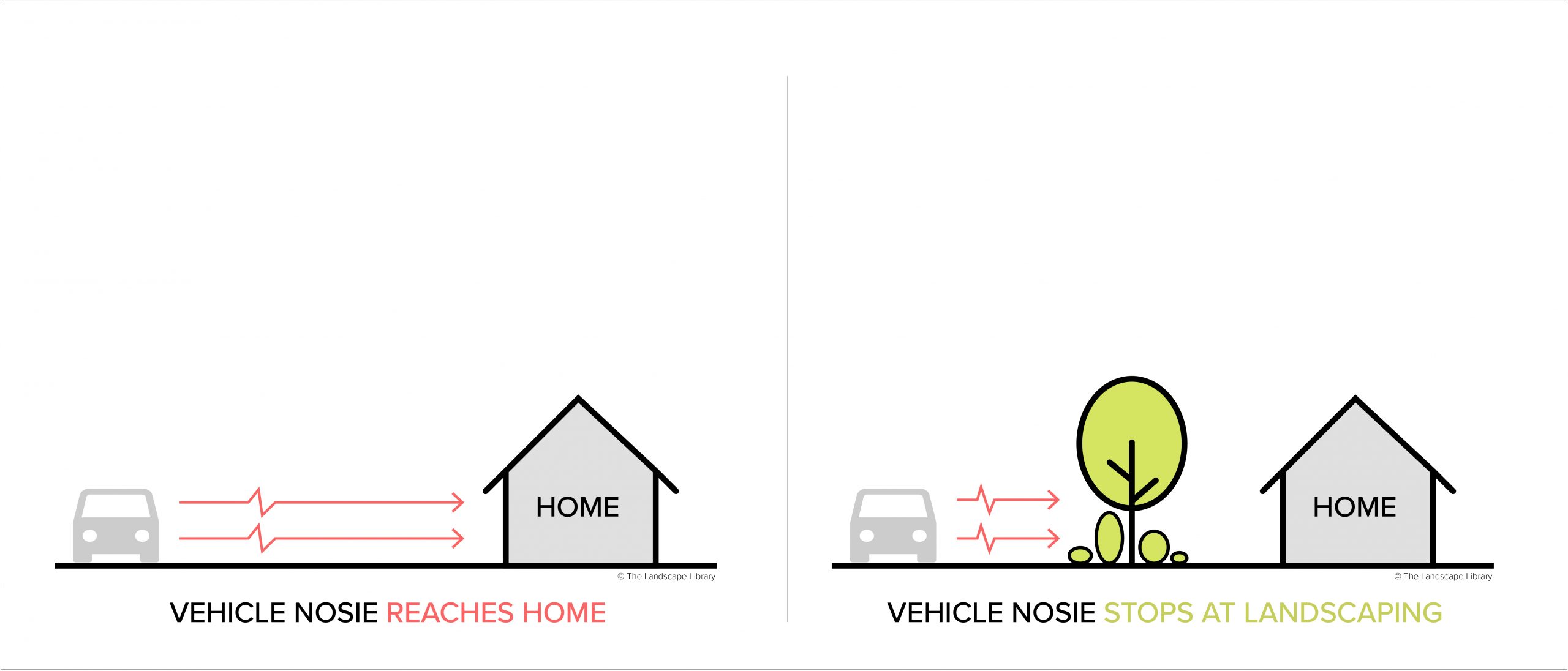
As seasons change, so do the attributes of plants.
Deciduous trees that once had leaves during the summer, now have lost the leaves in autumn and the winter sun is able to penetrate through the tree and warm the exterior of the house to potentially save heating costs during winter.
Exterior solutions can be a main contributor to the performance of the interior of the home which is why plantings in the landscape are important.
What Native Plants Grow in My Area?
Plantings within a landscape are composed of a variety of plants such as evergreen trees or shrubs, deciduous trees or shrubs, ornamental grasses and perennials to provide various functions throughout the year. Here is a quick description of each:
- Evergreen Trees or Shrubs: Generally, these are plants that retain green leaves throughout the year
- Deciduous Trees or Shrubs: Seasonally, these plants shed leaves and, most commonly, throughout autumn
- Ornamental Grasses: With high resilience to cold temperatures, these plants hold aesthetic value throughout fall and winter seasons
- Perennials: Living for several years, these are plants repeatedly surviving season after season
So where can you find plants that thrive for your project?
The first step to any successful project is understanding where the project is located and what USDA Hardiness Zone it is.
To find the USDA Hardiness Zone, follow the steps below:
- Enter your ZIP code in the search box in the upper-left of the map to find your location and the Plant Hardiness Zone Map
- Click the map at your location of interest to see the Zone classification at that location.
By knowing the hardiness zone at which certain plants can grow in your area, you can begin to design your landscape with various types of plants to perform certain roles within your yard.
Click here to read article “10 Drought-Tolerant Landscapes on the West Coast”.
Where to Install Native Plants?
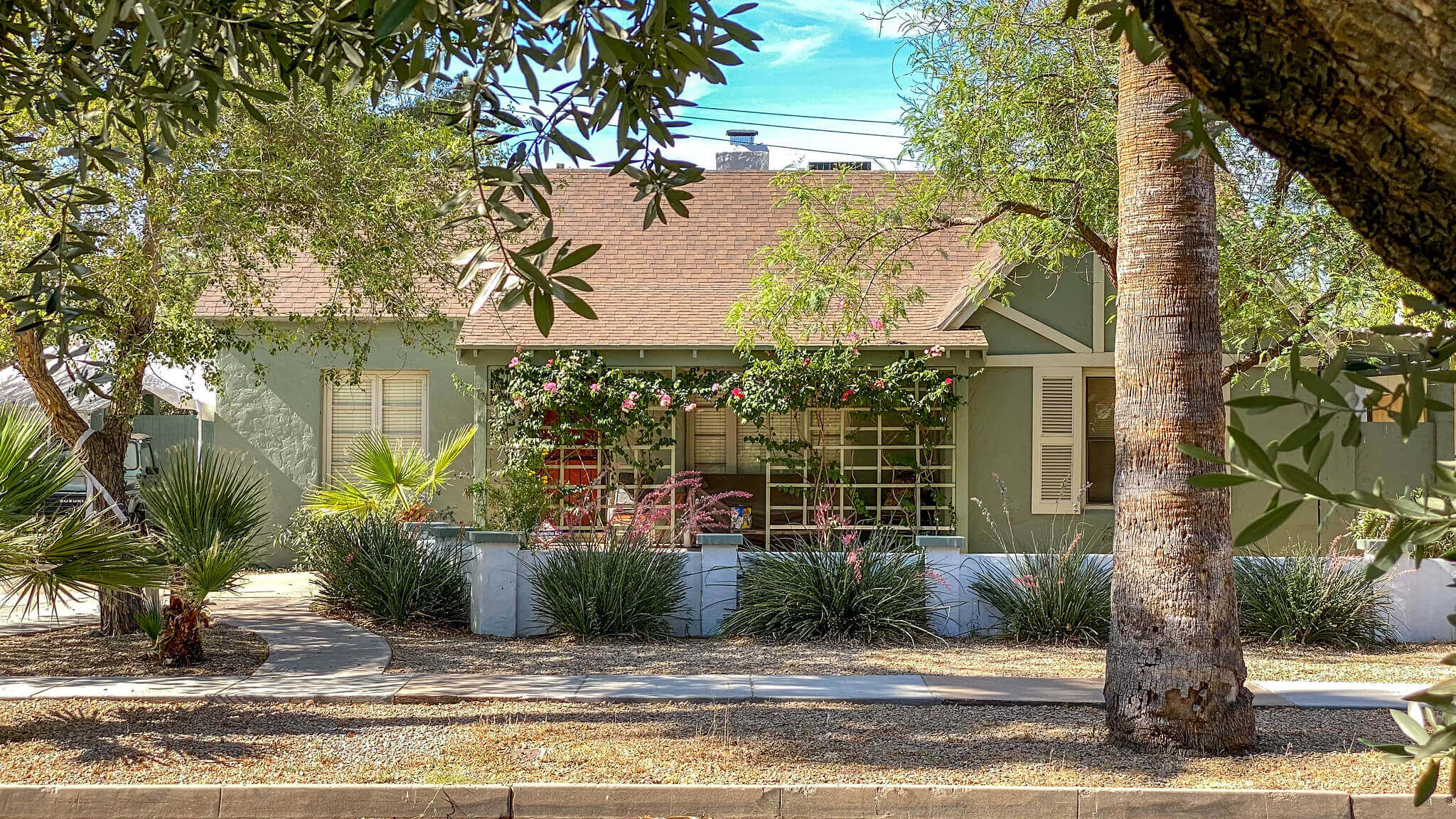
Planting a garden is an excellent way to add green space and provide a feeling of serenity in your home. There are many different types of plants to choose from depending on the amount of sunlight you have. If you live in a densely populated area or apartment without much access to natural light, opt for lower-light plants such as succulents and herbs. But if there is more sun available, you can grow larger varieties such as tomatoes and corn.
A key aspect of planting is choosing the right type of soil mix. A healthy mix will include compost and organic material such as peat moss or leaf mould. You’ll also need to water your plants regularly, fertilize them, and keep them well-watered during periods without rain. Lastly, don’t forget to provide shelter from extreme weather conditions with a patio cover, porch roof, or garden fence.
The process of maintaining a plant, taking care of it as it forms life and preventing it from death, can oftentimes be a frustrating task. However, by understanding the USDA Hardiness Zone and what plants grow in your area you set yourself up for a more performative garden.
Thriving plants can be the reason your landscape performs and thrives vs. becomes an inconvenience and a bother. By using progressive plants, you also decrease maintenance for your yard and can potentially reduce electric costs during the changing seasons.
With new plants constantly being created each year, understanding the requirements each plant needs to grow is crucial to the overall health of a plant.
But where do you place a plant within the landscape so it grows, thrives and performs?
Online platforms like Missouri Botanical Garden or Gardenia make it easy to discover new plants in your area and learn about the requirements needed for each plant.
To discover plants that grow in your area, follow the steps below:
Enter your USDA Hardiness Zone number from your project location in the Zone box.
Check all that apply if you are searching for different types of plants (evergreens, deciduous trees, shrubs, ornamental grasses, perennials, etc.)
Press Search and the the online platform will compile plants that grow in your area,
Review each plant’s noteworthy characteristics to understand the requirements (light, water, soil, etc.) in order for the plant to thrive.
Identify areas of the project site that fit the plants requirements and plan for the overall growth of plant in width and height to begin to place plants throughout the landscape.
What Planting Nurseries Sell Native Plants in My Area?
In the past, you may have experienced going to a home and garden retail store excited to pack your car with plants to only be overwhelmed and confused with the amounts of plants there are to choose from.
While these retail stores are convenient, they sell a variety of plants that are annuals that may not make it past one year of growing season.
- Annuals: A plant that completes its life cycle in only one growing season or single year
Rather than buying container plants shipped in from all parts of the world, visiting a local garden nursery is preferred for the plants overall health because the plants were grown locally within your microclimate.
Not dissimilar to the health benefits that come along with buying locally grown produce, by purchasing plants locally grown, this ensures that the plant is familiar with the microclimate, reducing the amount of time it takes to overcome plant shock.
What is plant shock?
Plant shock is described as the amount of time it takes for one plant to start growing again after it was replanted. For example, if you wanted to move a deciduous tree, a 1-inch caliper tree will generally take 1-year to overcome plant shock. The length of time it takes for a plant to overcome plant shock depends on a few factors with the primary factor being its familiarity with the microclimate.
To find local nurseries near your project, Google search “plant nurseries near *insert your zip code*” for the best results.
For landscape designers, this is a crucial part of the design process and will aid in the construction process being completed faster. Working together to source plants that can be purchased nearby for your project will always produce the best results.
By specifying plants local to the area, this will also ensure the contractor or homeowner can find the plants for the job.
For best results, ask your local plant nursery for available inventory before completing your project.
Why Are Native Plants the Best Option?

Native landscapes are important for many reasons. They provide habitat for many plants and animals that would not otherwise exist in an area, they provide us with beautiful scenic views, they provide us with clean air and water, and they help us reduce the risk of erosion. They also make our natural world more biodiverse, which also provides various ecosystem services like pollination and natural pest control. These are just some of the benefits to native landscapes!
While native landscapes have always provided positive benefits and they’ve always been an option for landscape design, they haven’t always been the most popular choice due to their sometimes nature to look messy and overgrown which opposes the last centuries’ popularized overly manicured style. More recently, though, with drastic weather patterns causing droughts and flooding, native landscapes have re-emerged as not only a sustainable solution for thriving landscapes but a design method standing out for its individuality.
How do you find plants that are native?
While many plants can grow in your area matching the USDA Hardiness Zone number, it’s important to know that this indication does not mean the plant is native.
Native plants are species that have historically and presently thrived in your area with no additional maintenance required like watering or pruning or lawn maintenance.
There are many benefits to using native plants in your yard, here are a few benefits your yard can experience with painting native plants:
- Reduce Water and Irrigation Costs
- Better Resistance to Local Weather
- Less Maintenance
- Restores Natural Habitats
- Rarely Invasive
- No Fertilizer or Pesticides Needed
Now that you know the benefits, if you are curious to know whether or not your plants are native to your area or would like to find plants native to your area: Click here to find native plants in your area.
Conclusion
Extensive amounts of research is needed to understand the requirements each plant needs to achieve a successful and thriving landscape but with the above information, you can make great decisions to choose which plants to include in the yard.
Native plants are better for the environment than exotic plants. They are more resistant to harsh conditions and grow healthier. They evolved in a particular habitat and have deep roots. This helps them survive in the wild. The native plants are also a better choice for your landscaping because they are more suited for your climate. Furthermore, they provide a more natural ecosystem in your backyard, and you can help the local wildlife by planting them in your yard. There are many advantages of native plants.
In addition to creating a healthy ecosystem, native plants also support local life. They help the native creatures in a complex web of life. During the early spring, birds pollinate tiny flies that feed the birds on the new flowers. The seeds of the native plants are ready when the birds need them. They disperse their seed by droppings, so it is important to plant them where you can observe them. You can even get some information about the local ecology from the website.
In contrast, invasive plants are introduced and don’t live in the native ecosystems. These plants are not native to the area and have no enemies in the area. Instead, they are introduced by humans and disrupt the ecosystem. This leads to many problems for the local community. They are the cause of a lot of damage to our environment.
Key elements designed in the landscape can make drastic effects for the interior of the home, whether it is reducing heating and cooling costs, or reducing the overall maintenance of the landscape.
Here’s how you can get started on making your own Native Landscape at home:
- Enter your zip code at USDA Hardiness Zone Website
- Enter USDA Hardiness Zone number in box at either Missouri Botanical Garden or Gardenia
- Check if the plants you choose for the plant palette are native at this resource here at The Native Plant Finder.
- Look for nurseries in your area that carry the plants native to your location.
- For native design inspiration, follow the Landscape Library’s Pinterest page.
For centuries, landscape designers have played an important role not only for the exterior of the yard, but also for the interior of the home.
It is now easier than ever with online resources to find and study which plants can grow in your area as a homeowner or a designer.
